Fungal Genomics & Biology
Open Access
ISSN: 2165-8056
ISSN: 2165-8056
Research Article - (2022)Volume 12, Issue 5
Mushrooms, the edible macro fungi, have been serving the humanity through nutritional and medicinal supports. Recently, mushrooms have been gaining popularity to the Bangladeshi consumers. Diabetic, cardiac, cancer and hypercholesterolemic patients have been noticed to search for mushrooms of various types in different chain stores, shopping malls and in drug stores. As Bangladesh is a tropical country and most of the mushroom species grow at lower temperature, mushrooms grown during winter can hardly meet the ever increasing consumer demand in this country. Thus, search for sustainable development of storage techniques for the mushrooms grown in winter season to meet the demand of the mushroom consumers all the year round has reached momentum. Thus, the present study had been aimed at developing an eco-friendly, easy-to-reach and utilize as well as less expensive mushroom storage technique that would maintain the nutritional and medicinal aspects of mushrooms intact. Based on the mostly known storage techniques such as drying and freezing, comparative nutritional studies of oyster mushroom (Pleurotus ostreatus) at different storage conditions (sun drying versus oven drying; normal versus freeze drying) and at different duration had been performed in this study. Among them, freeze-drying had been found to be the best in maintaining the nutritional and medicinal qualities of mushrooms. Thus, following the sustainable techniques described in this study, mushroom growers, consumers as wells as myco-researchers would be of immense benefit. Also, techniques developed through this research outcomes would aid in developing sustainable myco-nutritive, myco-medicinal and myco-cosmetic industries in Bangladesh and elsewhere in the world.
Macrofungi; Mushroom; Mycology; Medicinal values; Nutritional values; Pleurotus ostreatus; Storage techniques
Mushrooms are non-green fungus plants that grow seasonally in a variety of settings ranging from plains to dense forests, lush meadows, and roadside walks all over the world. It is made up of a vast collection of different forms, sizes, appearances, and edibility. There are around 140,000 distinct types of mushrooms in the globe [1]. Mushrooms come in a variety of genera and species, but they all have the capacity to take nourishment from their surroundings through their cells. Some mushrooms have beneficial or parasitic relationships with other plants, feeding off of them, while others feed on and decompose dead organic matter. White mushrooms are edible, while some are toxic and dangerous; yet, all mushrooms have similar but differing descriptive qualities [2].
The soft and edible fruit bodies of numerous species of macro fungi are edible mushrooms (fungi which bear fruiting structures that are large enough to be seen with the naked eye).They can grow below ground (hypogeous) or above ground (epigeous), both of which can be harvested by hand. Edible mushrooms are a good source of nutrients and bioactive chemicals, and their tastes and culinary qualities are attracting more people. They've recently gained popularity as functional meals due to their possible health benefits [3]. Mushrooms are high in nutraceuticals, which provide antioxidant, anticancer, and antibacterial benefits. Wild mushrooms are becoming more significant in our diet due to their nutritional value, which is linked to their high protein and low fat/energy content [4]. Antioxidants can scavenge free radicals and extend shelf life by slowing the lipid peroxidation (LPO) process, and eating antioxidant-rich foods can provide a variety of physiological advantages to consumers, including protection against oxidative stress-related illnesses [5]. Most of the nutritional studies on mushrooms have been performed using fresh mushrooms or mushroom powder. There is scarcity of data representing comparative study on fresh and stored mushrooms. Thus, the present study had been aimed at determining the comparative nutritional profile of P. ostreatus at its fresh, sun dried, oven dried, blanched, freezed and refrigerated condition [6].
Location of the experiment
The experiment was carried out at the Mushroom Development Institute, Savar, Dhaka, Bangladesh.
Determination of optimum conditions for drying mushrooms
Fresh mushrooms were collected from Mushroom Development Institute, Savar, Dhaka, Bangladesh. The mushrooms were washed under running tap water to remove soil particles and sliced into small pieces with a knife. Then two methods were used for drying mushrooms [7]. After drying, the dried chips were ground into coarse powders using a blender having high-capacity grinding power. Then the powder was stored in an airtight container with necessary markings for identification and kept in a cool, dark and dry place for further investigation [8].
Sun drying
Mushrooms were spread on two separate porcelain trays and sun dried [9]. The atmospheric temperature during the 7 days drying period ranged between 30°C–33°C and relative humidity ranged from 65-70 percent.
Oven drying
Mushrooms were spread on stainless steel trays and kept in an oven at 80°C for 2 hours. The samples were removed from the oven and allowed to cool at room temperature.
Pretreatment and cold preservation
Each species needs compatible and distinctive alternative techniques for their active, pure and viable physiology in terms of color, texture, and taste. Preservation protocols are applied accordingly [10]. The shelf life of fresh mushrooms may be extended by refrigeration at 1-4°C. Cooling the mushrooms results in lower rates of all the physiological processes within the mushrooms. During the initial cooling there is a high cooling load. Once the mushrooms are pre-cooled, however, the cooling load is much reduced. Freshly harvested mushrooms are highly perishable as they are susceptible to deterioration by enzymes and microorganisms. It has been realized that merely producing mushrooms is of no use unless these are properly preserved, keeping in view the export objectives. Hence, following of proper processing and storage techniques is of utmost importance. Among different techniques, refrigerating and freezing with blanching are mostly utilized [11].
Refrigeration
Low temperature is effective for short-term preservation. Mushrooms were stored in a perforated plastic box at 4-7°C for up to 3 days, 5 days and 7 days interval for experiment.
Freezing with blanching
Cold-preservation of mushrooms is the most important aspect for long term preservation. Freezing was done of two samples up to 1 month and 2 month at a temperature of below-18°C. Blanching is defined as the enzyme deactivation phenomena, which helps in retaining color, reduction in initial microbial growth, cleansing the product, helps to release carotenoids, thus enhancing their bioavailability and extractability. The main purpose of blanching is to inactivate enzymes that cause browning as well as textural changes of mushroom. For blanching, mushrooms were soaked in a mixture containing water with a small amount of lemon juice. Then, mushrooms had been steamed for 4-5 minutes followed by placing the mushroom in an ice bath for the same amount of time [12].
Extraction procedure
Fruiting bodies of P. ostreatus were dried first and then powered. The powered sample was then kept in 95% ethanol in different conical flask. 5% extraction of mushroom was done here (5 gm mushroom in 100 ml ethanol). The conical flask of mushroom was kept in the shaker for two days in 40°C. After that the solution was filtered by clothes to take the solvent portion and then again the solvent portion was filtered through Whatman filter paper [13]. After that the solvent is evaporated through a rotary evaporator and the solid portion is collected. From 500 gm 45 gm extract was collected.
Proximate composition of sun dried and oven dried mushrooms
The study indicated that sun dried mushrooms are quite rich in protein and lipid and low in ash, fiber and carbohydrate (Table 1). On the other hand, oven dried mushrooms are low in protein and lipid but high in carbohydrate (Table 1). This study also showed that sun dried oyster mushrooms maintain its original flavour and nutrient content.
| Treatment | Moisture % | Protein % | lipid % | Ash % | Fiber % | Carbohydrate % |
|---|---|---|---|---|---|---|
| Sun dried | 9.44 | 27.72 | 3.32 | 11.93 | 10.14 | 46.89 |
| Oven dried | 7.92 | 24.99 | 2.98 | 12.48 | 10.51 | 49.04 |
Table 1: Proximate composition of sun dried and oven dried mushrooms.
Proximate composition of storage mushroom in normal refrigerator
The study indicated that fresh mushrooms were quite rich in protein and fiber and low in lipid content making them excellent foods that can be used in low caloric diets (Table 2). But after stored mushroom in normal refrigerator the protein, fat and fiber content gradually decreased but carbohydrate and ash content gradually increased (Table 2).
| Storage | Moisture % | Protein % | Fat % | Ash % | Fiber % | Carbohydrate % |
|---|---|---|---|---|---|---|
| AH | 87.89 | 28.85 | 3.85 | 10.45 | 13.64 | 43.21 |
| S3D | 8.94 | 27.50 | 2.86 | 11.09 | 12.58 | 45.97 |
| S5D | 9.09 | 26.48 | 2.54 | 12.38 | 12.18 | 46.42 |
| S7D | 9.51 | 24.37 | 2.03 | 12.55 | 10.14 | 50.91 |
Table 2: Proximate composition of storage mushroom in normal refrigerator.
Proximate composition of storage mushroom in deep freezer with blanching treatment
The study showed that stored mushroom in deep freezer with proper blanching technique contain excellent amount of protein, fat and fiber content that we found in fresh mushroom after harvest is almost same (Table 3).
| Storage | Moisture % | Protein % | Fat % | Ash % | Fiber % | Carbohydrate % |
|---|---|---|---|---|---|---|
| S1M | 8.86 | 27.08 | 3.67 | 11.40 | 13.74 | 44.11 |
| S2M | 7.28 | 27.34 | 3.56 | 11.87 | 12.18 | 45.05 |
Table 3: Proximate composition of storage mushroom in deep freezer with blanching treatment.
Nutritional analysis
Protein content: The protein content of different stages of P. ostreatus mushrooms is shown in Figure 1. All the stages contain a considerable amount of protein. The content of protein varied from 24.37%-28.85% (w/w) in the fresh, dry and storage mushroom. The highest content of protein was found in fresh mushroom (28.85%) and the lowest protein was found in S7D stages (24.37%). The other experiments varied significantly in different stages.
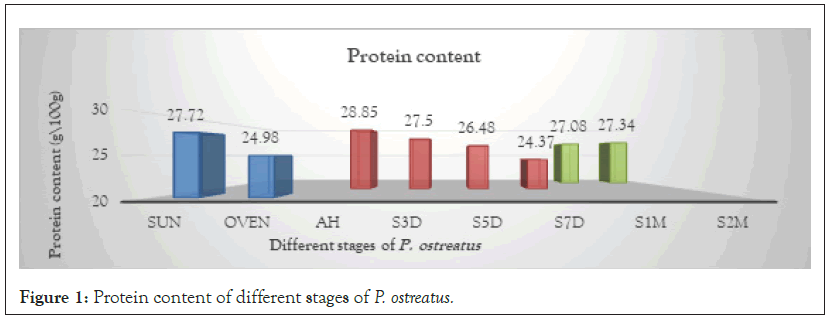
Figure 1: Protein content of different stages of P. ostreatus.
Lipid content: The lipid content of different stages of P. ostreatus mushrooms is shown in Figure 2. All the stages contain a considerable amount of lipid. The content of lipid varied from 3.85%-2.03% (w/w) in the fresh, dry and storage mushroom. The highest content of lipid was found in fresh mushroom (3.85%) and the lowest lipid was found in S7D stages (2.03%). The other experiments varied significantly in different stages.
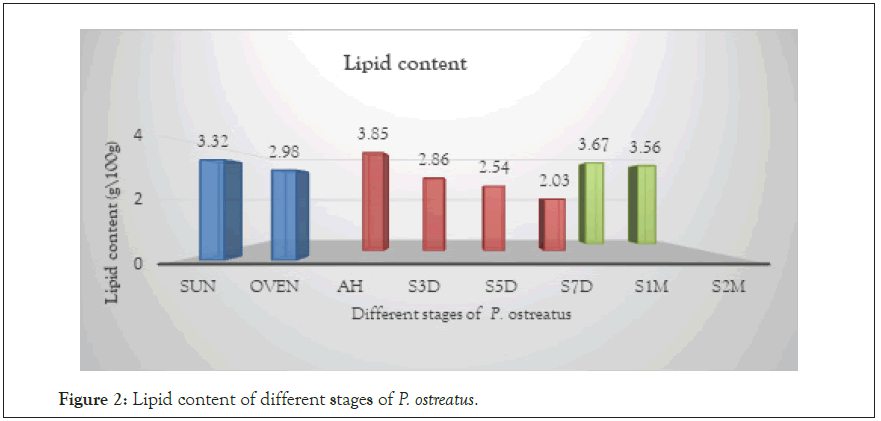
Figure 2: Lipid content of different stages of P. ostreatus.
Crude fiber: The fiber content of different stages of P.ostreatus mushrooms is shown in Figure 3. All the stages contain a considerable amount of fiber. The content of fiber varied from 13.74%-10.14% (w/w) in the fresh, dry and storage mushroom. The highest content of fiber was found in fresh mushroom after storage 1 month in deep freezer and the lowest content of fiber was found in sun dried and storage mushroom after storage 7 days in normal refrigerator. The other experiments varied slightly in different stages.
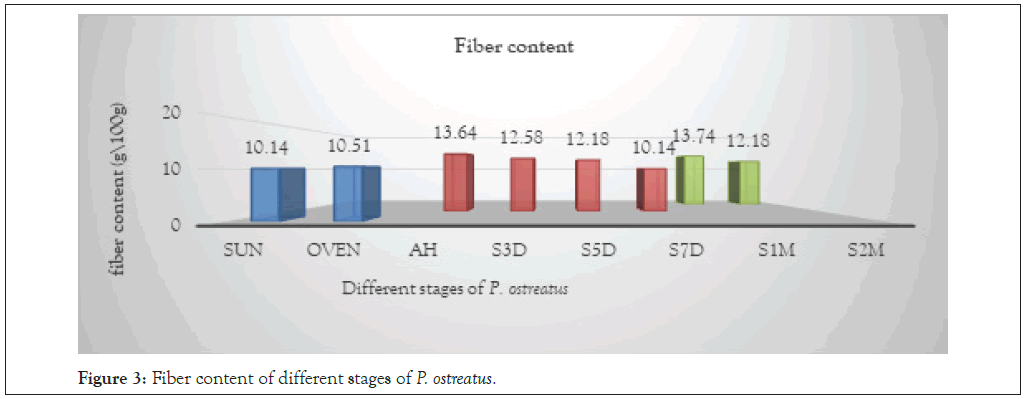
Figure 3: Fiber content of different stages of P. ostreatus.
Ash content: The ash content of different stages of P. ostreatusmushrooms is shown in Figure 4. All the stages contain a considerable amount of ash. The content of ash varied from 10.45%-12.55% (w/w) in the fresh, dry and storage mushroom. The highest content of ash was found in fresh mushroom after storage 7 days in normal refrigerator and the lowest ash content was found in fresh mushroom after harvest. The rest of the experiments were statistically different but varied significantly in different stages.
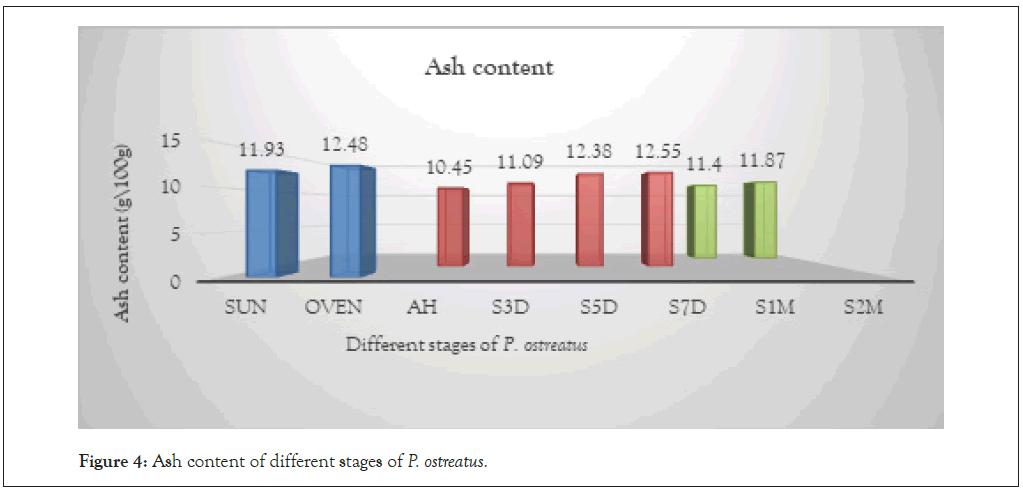
Figure 4: Ash content of different stages of P. ostreatus.
Carbohydrate
The carbohydrate content of different stages of P. ostreatus mushrooms is shown in Figure 5. All the stages contain a considerable amount of carbohydrate. The content of carbohydrate varied from 43.21%- 50.91% (w/w) in the fresh, dry and storage mushroom The lowest percentage of carbohydrate was found in fresh mushroom after harvest (43.21%) and the highest carbohydrate percentage was found in fresh mushroom after storage 7 days in normal refrigerator (50.91%). The rest of the stages were statistically different but differed significantly in respect to percent carbohydrate content.
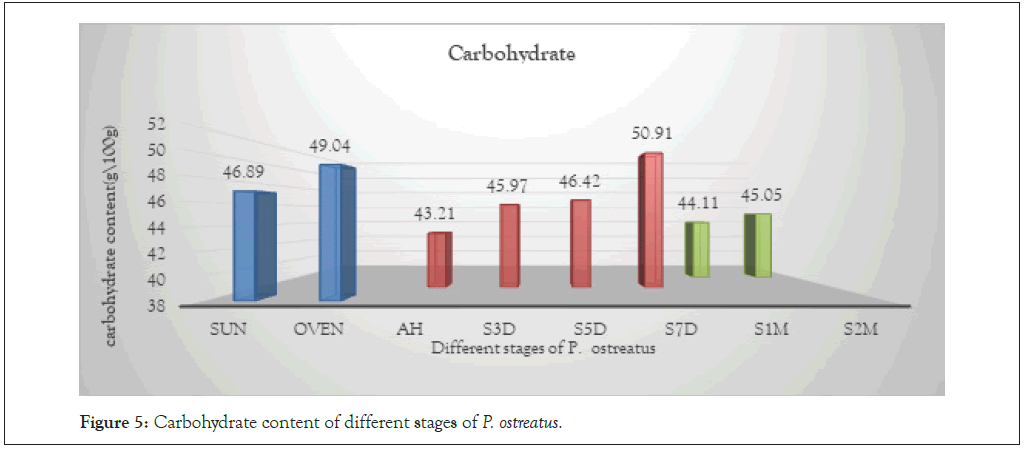
Figure 5: Carbohydrate content of different stages of P. ostreatus.
In the present study, comparative nutritional profile of the oyster mushroom (P. ostreatus) has been studied. Between sun drying and oven drying techniques, the former had been found better in maintaining the nutritional status. Between freeze drying and refrigerating, the letter had upper hand in this aspect. Thus, finding of the current research would be of immense benefit in preserving and maintaining the nutritional status of different edible mushroom species. This knowledge would aid the mushroom growers and consumers as well as mushroom researchers globally.
Authors gratefully thank Jahangirnagar University authority for providing the funding to conduct this research.
Citation: Rahman MA, Arif M, Md Shahjalal H, Kakon AJ, Ahmed F (2022) Nutritional Profile Study of Oyster Mushroom (Pleurotus ostreatus) at Different Storage Conditions. Fungal Genom Biol. 12:200.
Received: 26-Jul-2022, Manuscript No. FGB-22-18562; Editor assigned: 29-Jul-2022, Pre QC No. FGB-22-18562 (PQ); Reviewed: 12-Aug-2022, QC No. FGB-22-18562; Revised: 19-Aug-2022, Manuscript No. FGB-22-18562 (R); Published: 26-Aug-2022 , DOI: 10.35841/2165-8056.22.12.200
Copyright: © 2022 Rahman MA, et al. This is an open-access article distributed under the terms of the Creative Commons Attribution License, which permits unrestricted use, distribution, and reproduction in any medium, provided the original author and source are credited.